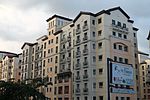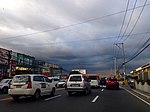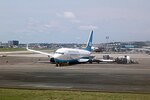On May 4, 2025, at 08:06 PST (UTC+08:00; 00:06 UTC), a traffic collision occurred after a sports utility vehicle (SUV) rapidly accelerated and crashed into the terminal 1 building of Ninoy Aquino International Airport (NAIA) in Parañaque, Metro Manila, Philippines. The collision killed two people as a result of the inflicted blunt force traumas; both of whom were standing on the airport's curbside. Four others were also injured.
The accused was Leo Sinlao Gonzales, who was driving the Ford Everest involved in the accident. Gonzales was sending off his traveling employer when, allegedly, a sedan passed in front of him, which he claimed caused him to panic and press the accelerator. However, CCTV footage contradicted his statement, showing no car was ahead of him. Emergency services were called to the site, and the victims were transported to San Juan de Dios Hospital in Pasay. Gonzales had his professional driver's license suspended by the Land Transportation Office, underwent a drug and alcohol test, which he tested negative, and was charged with two counts of homicide and other related charges. The accused first appeared in court on May 27, where he pleaded not guilty.
The accident drew widespread attention, prompting responses from several agencies and reactions from personalities. It also prompted criticisms over airport infrastructure and accusations of corruption after a traffic bollard broke after being run over by the SUV and called out government agencies to address utmost road safety and licensing standards. New NAIA Infrastructure Corporation (NNIC) president Ramon Ang, the Department of Migrant Workers, and the Department of Transportation (DOTr) have vowed to assist the victims. After the accident, NNIC probed other existing traffic bollards at the airport, planning to have them replaced and modify the terminal's drop-off configuration. The Malacañang Palace and the DOTr are initiating an investigation, focusing on scrutinizing the installed bollards at the airport, which were installed while the airport was under government control.










